SASKATCHEWAN - MINERAL RESOURCES
Mining is Saskatchewan's third largest industry.
Mines produce potash, uranium, coal, gold, salt, silica sand, sodium sulphate and clay.
The province is Canada's second largest oil producer and third largest producer of natural gas and coal.
 Natural Gas The province of Saskatchewan is the third largest natural gas producing province in Canada. The main areas and reserves are along the western border in the Beacon Hill, Kindersley and Hatton areas. In the year 2010 there were over 20,000 producing natural gas wells in the province. Many industries use natural gas including upgraders, fertilizer plants and pulp and paper mills. Natural gas is used to fuel home furnaces and hot water heaters. Gas can be transported through pipelines. 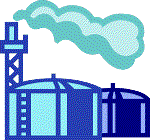
Oil 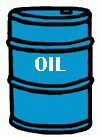
There are three types of mining in Saskatchewan 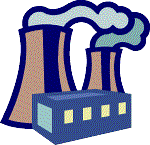 Uranium is sold to fuel power plants.
Uranium  dragline Coal (lignite) Saskatchewan is the third largest producer of coal in Canada. The coal mines in the province are open pit mines. Open pit mining uses the dragline method to obtain the coal. Coal mining is the major mining activity in southeast Saskatchewan. Today, there are three active coal mines in the province. Two are in the Estevan/Bienfait area and one is near Coronach The majority of the coal mined is used to generate power in the province. Over seventy percent of the electricity in the province comes from coal-fired power stations which are located in southern Saskatchewan. The Boundary Dam power station just south of Estevan is the largest lignite coal-burning thermal power station in Canada. Other coal-burning power stations are the Poplar River power station near Coronach and the Shand power station also near Estevan. Two other power stations - the Queen Elizabeth power station in Saskatoon, and the Coteau Creek power station near Lake Diefenbaker do not use coal. Potash Saskatchewan is home to the world's richest deposits of potash and is the largest potash producer in the world.. 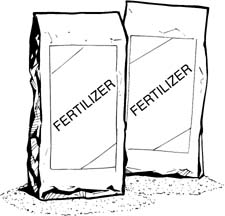 Much of the potash that is mined is used for fertilizer. Plants need fertilizer to grow into strong healty plants. The Potash Corporation of Saskatchewan operates six mines. The mine near Esterhazy is the largest in the world. Sodium Sulphate There are five plants in the province. The sodium sulphate mined in Saskatchewan is the product of alkaline lakes which are found in the southern part of the province. When the water is removed the salt deposits remain. The province ranks sixth in the world in the production of sodium sulphate. Sodium sulphate is used in detergent ( dishwashing and laundry powder) carpet deodorizers, corn starch, the pulp and paper industry and glass industry. 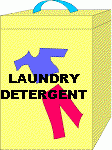 more about sodium sulphate  Most of the materials used to build your home are products of the mining industry. The concrete used for the basement and driveway is a mixture of sand, gravel and cement. The inside walls of homes is probably gypsum wallboard. Potassium sulphate is used in the manufacture of the wallboard. Decorative stone used on the outside walls of homes is also a product of mining. |
|
|
info obtained from Sask Energy and Resources
Go to THE web site for more detailed information
J.Giannetta
jgiannet@hotmail.com
2003
updated July 2011
Web Pages for Students